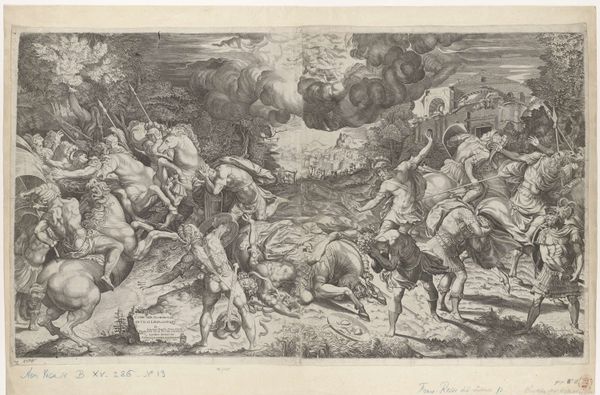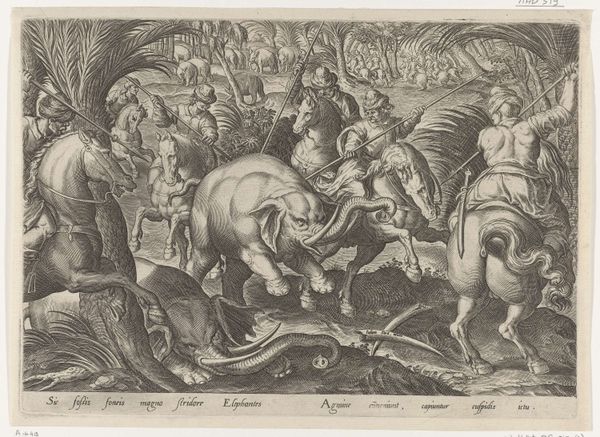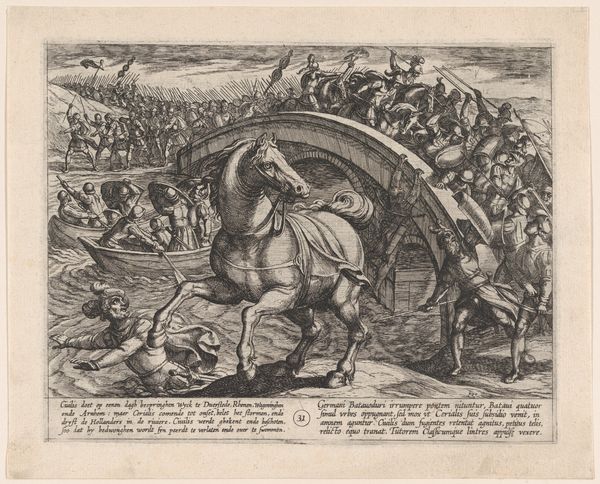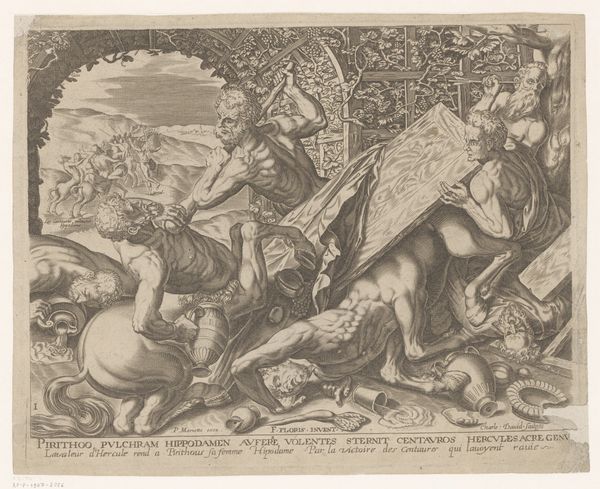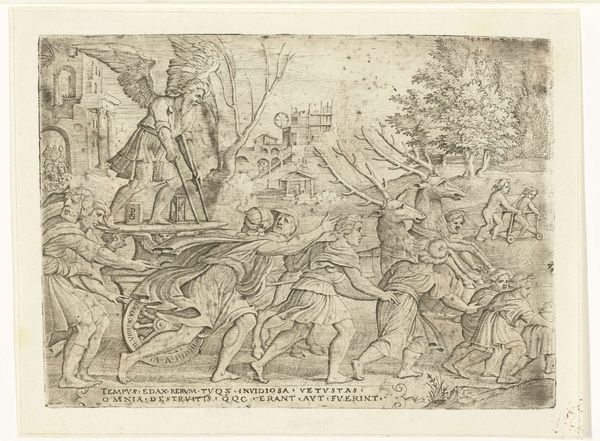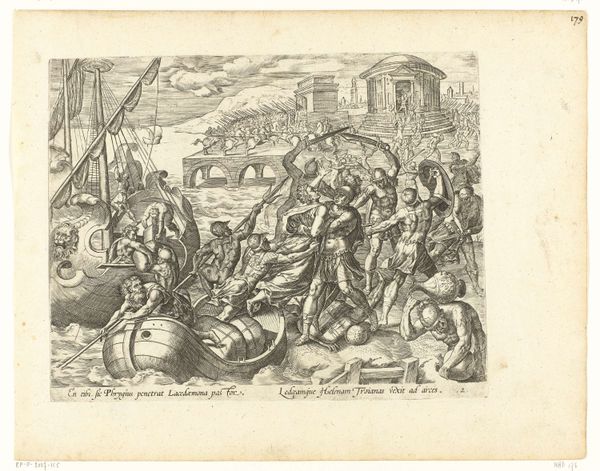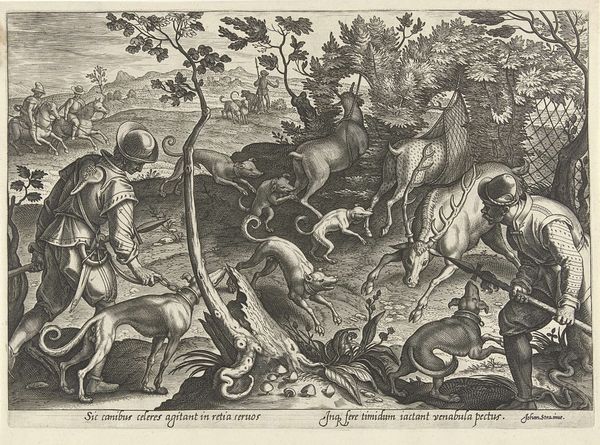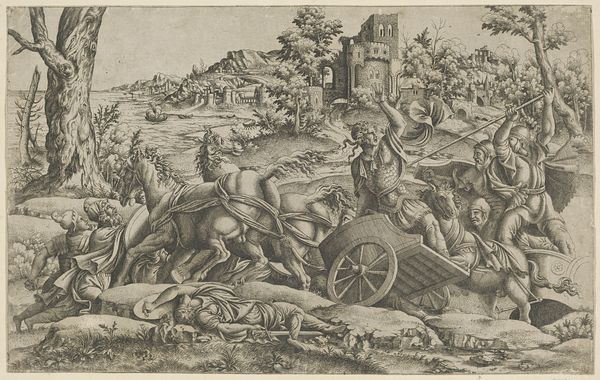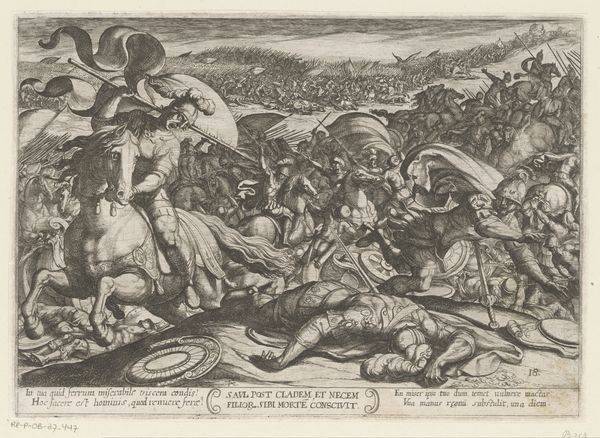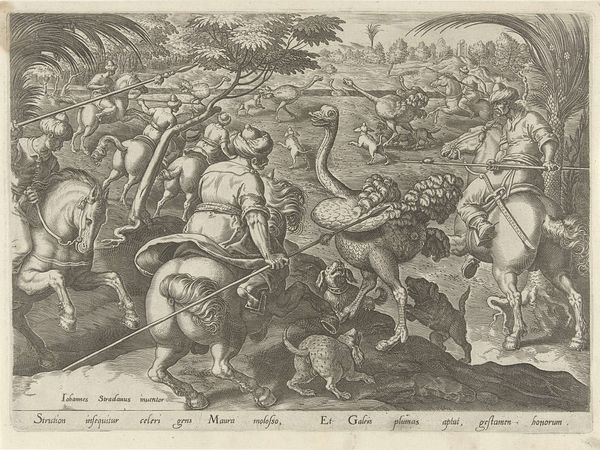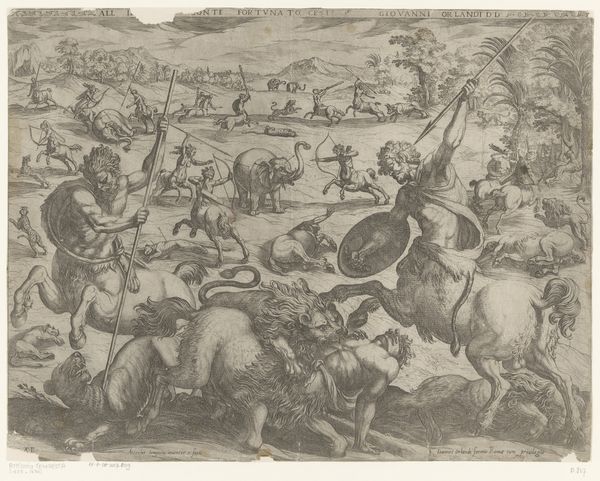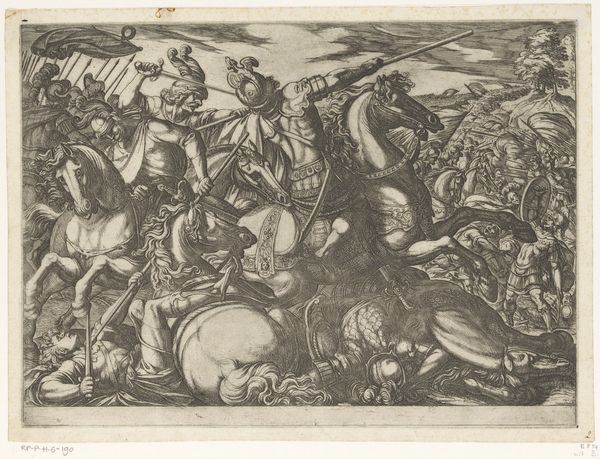
print, engraving
#
narrative-art
# print
#
old engraving style
#
mannerism
#
figuration
#
history-painting
#
engraving
Dimensions: height 198 mm, width 259 mm
Copyright: Rijks Museum: Open Domain
Curator: Looking at this print, I’m immediately struck by the sheer density of detail—a true feast for the eyes, isn't it? The use of line, the almost frantic energy… Editor: Indeed! The overall impression, even without knowing the subject, is of chaos, really. Let’s provide some context, shall we? This is "The Death of Absalom," an engraving from around 1585 by Wierix, housed here at the Rijksmuseum. It depicts a very specific and loaded biblical moment. Curator: And it is a potent moment in socio-political history! Absalom, King David’s son, led a rebellion against his father and ultimately met a gruesome end. We see him here, caught in a tree, his elaborate garb suddenly making him extremely vulnerable, whilst being attacked with spears. Wierix utilizes this scene to comment, perhaps, on ambition, power, and the dangers of familial discord in the royal lines. Editor: Absolutely. I'm captivated by the technical skill evident here. Notice the use of cross-hatching to build up tone and shadow. Observe, too, the almost Mannerist elongation of the figures, which imparts an unnatural, heightened drama. The horse, especially, embodies this elongation. This artifice draws attention to the emotional distress being displayed, but the high drama feels very performative. Curator: Performance and spectacle being very intentional elements of statehood for ruling dynasties... it is important also to look beyond just the technique, the style, to consider this as a historical artifact reflective of its own social moment. Wierix, within a politically volatile landscape, taps into pre-existing narratives around kingship and disobedience, echoing, and perhaps critiquing, power structures. Absalom becomes, for Wierix's audience, a cautionary figure against rebellion, perhaps reflecting anxieties present during a very conflictual and destabilized time for Dutch governance and religiosity. Editor: Well, focusing again on Wierix’s method: he expertly uses the print medium to create an immediate sense of drama. The very starkness of the black and white emphasizes the contrast between Absalom’s hubris and his pathetic end. He is quite isolated by the rendering. Curator: Indeed. From an intersectional perspective, Wierix may be highlighting gender roles through the figure of Absalom. Note the extravagance of his garments, the implication that his vanity and masculine privilege perhaps are factors which contribute to his downfall. Editor: Seeing it analyzed like this helps to clarify the intent behind it, whereas at first it appeared just dramatic and chaotic. Curator: And focusing on sociopolitical, historic, or even gendered intent helps us avoid the risk of detaching from an artwork’s powerful connection to those issues and challenges.
Comments
No comments
Be the first to comment and join the conversation on the ultimate creative platform.
